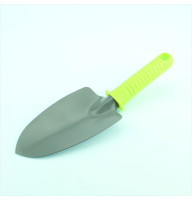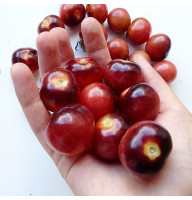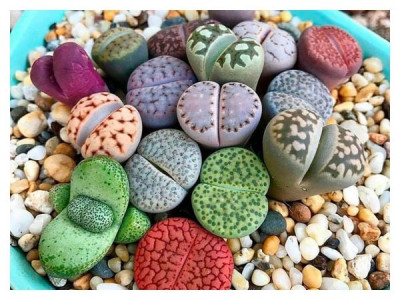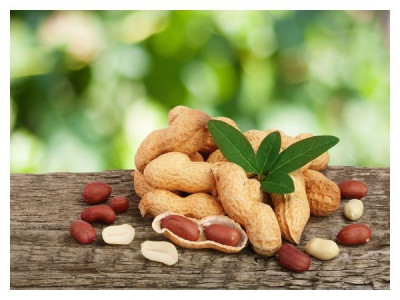Blueberries are a very special berry. And its care preferences are very different from the requirements of other garden crops. All activities are strictly tied to the annual cycle of berry development. In spring, the dachnik has one «blueberry» care, in summer - others. And you can not miss anything, otherwise full development of the bush and a harvest of tasty and healthy berries do not get.
The main summer work: watering, weeding, loosening the soil, mulching, soil acidification, fertiliser and protection from birds. We will talk about them in detail.
Watering blueberries

Blueberries are a moisture-loving crop. With insufficient watering, the taste of berries deteriorates, and they cease to please the dachnik with their size.
Water the bushes twice a week. In strong heat, the frequency of watering is increased. To watering under the root add sprinkling: very well blueberry responds to watering on the leaf, because its leaf plate is not adapted to self-regulation of the level of evaporation.
For a young bush, 5 litres is enough, and an adult plant needs at least 10 litres.
But not more! Even for water, the blueberry establishes a clear measure.
Pouring its roots with water is not allowed! Otherwise, the culture will begin to experience oxygen starvation, and this can lead to the death of the bush.
Watering should be not so much abundant as frequent, because the root system of blueberries lies at a depth of up to 40 cm, and this layer of soil quickly dries out.
It is desirable to water and spray bushes after 16.00 - this will protect them from overheating and accelerate photosynthesis.
Particular attention should be paid to watering blueberries in July-August - during the fruiting period and the laying of flower buds for the next season. Otherwise, you can stay without a harvest for a long time.
Weeding
Here blueberries do not differ from other crops.
Fight with grass and weeds growing around the bush, it is necessary during the whole season, otherwise the berry will experience a deficit of moisture and nutrients.
In addition, excess vegetation changes the microclimate in the lower part of the bush and provokes the development of bacterial and fungal diseases, as well as the appearance of pests.
If not a very large area is allocated for blueberries, the vegetation around the bushes can be cut off by hand, and the inter-rows can be carefully mown.
Loosening the soil
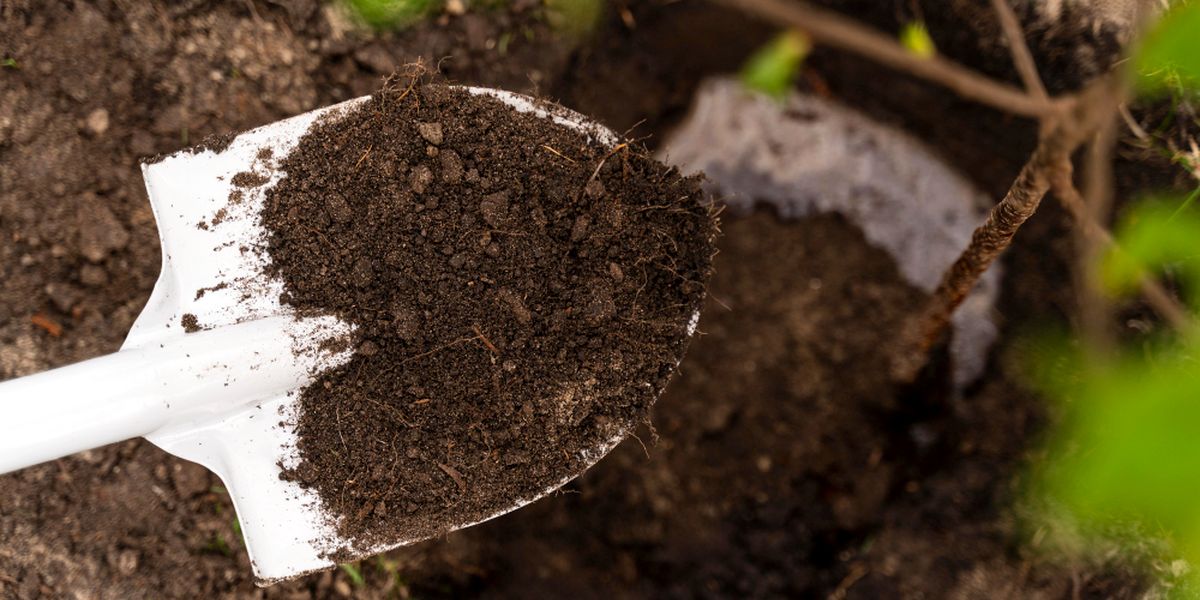
A very important procedure for blueberries is regular loosening of the soil. It can be done together with weeding and after each watering.
Loosening helps to break the crust on the soil surface and restore air exchange in the soil. The soil in the root zone should not be loosened more than 5 cm. Due to the close proximity of the blueberry roots, there is a high risk of damaging them.
Mulching
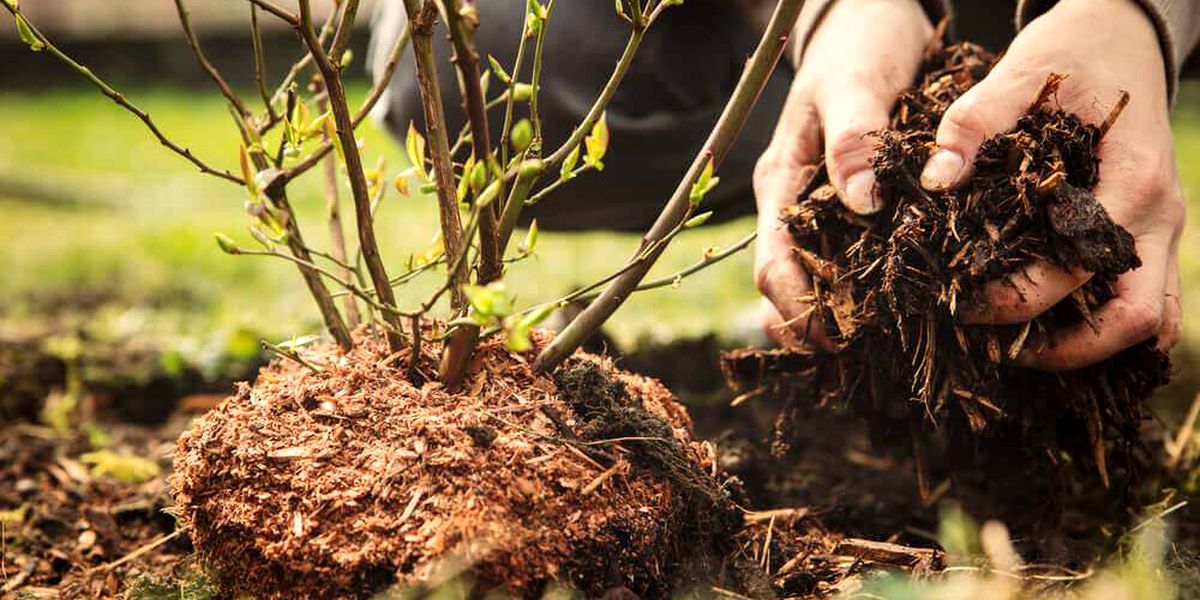
Mulch will restrain the growth of weeds, reduce the evaporation of moisture from the soil surface and prevent the formation of crusts on the soil. The mulch is also useful because, if properly applied, it will increase the acidity of the soil. And this indicator is very important for blueberries. The layer of mulch should be at least 10 cm.
The soil under the blueberries can be mulched:
- needles;
- conifer bark;
- over-ripe sawdust;
- spruce cones;
- top peat.
Fertilising blueberries
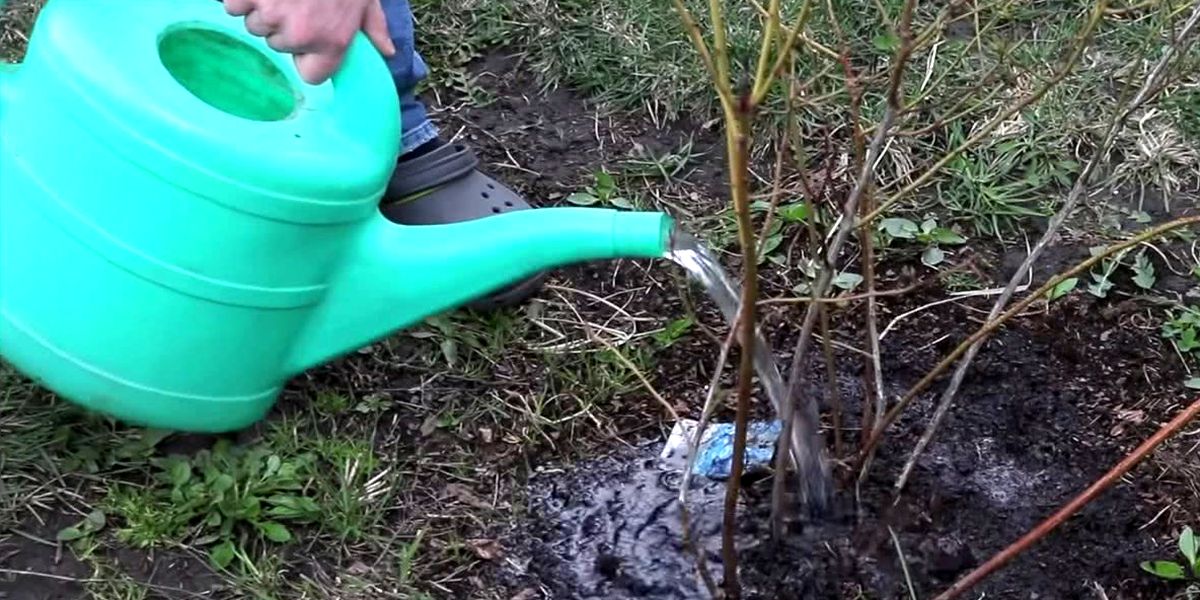
Usually, the berry is fed at the end of spring. But if for some reason you missed this event in May, you should do it now, without delay.
The optimal composition of fertiliser for the first feeding of blueberries:
- ammonium sulfate,
- superphosphate,
- potassium sulfate.
Taken in a ratio of 1:2:1.
Balanced composition have azofoska, nitroammophoska, Florovit for blueberries, Fertika Universal and others.
The norm of fertilisation:
- for a young bush - 1 tsp,
- for an adult - 1 tbsp.
If some changes appear in the appearance of plants, signalling a deficiency of certain nutritional elements, then in July, additional fertilisation will be required.
Symptoms:
- Shoots grow slowly. Leaves turn yellowish-green - nitrogen deficiency.
- Leaf tips turn purple. Clinging tightly to the stem - phosphorus deficiency.
- The tops of the leaves die off - potassium deficiency.
In this case, a complex mineral fertiliser is needed.
- Leaves curl and turn yellow at the edges. In the upper part of the leaf plate appears yellow-green spotting - calcium deficiency. Need dolomite limestone (100 g per 1 square metre).
- The edge of the leaf turns red - magnesium deficiency. Need magnesium sulfate (100 g per litre of water). Spray the bushes.
- Chlorotic spots appear - sulphur deficiency. It is not necessary to make as part of sulfate forms of nitrogen or phosphorus fertilizers (50-100 g of sulfur per square metre (depending on the acidity of the soil)).
It is forbidden to feed blueberries with organics! The berry can die.
Acidification of the soil
Optimum soil acidity is one of the most important conditions for the normal growth of blueberries.
The pH level should be between 3.5 and 4.5 units. If the soil is neutral, then twice a year (in early June and late September) it should be acidified. Dissolve in 10 litres of warm water 3 tsp (without a slide) of citric acid or 100 ml of vinegar (9% table or apple). Pour the prepared acidifier pre-moistened soil under the bush. Consumption - up to 10 litres for one adult plant.
Install bird deterrents
During berry development, it is very important to take care of repellent devices for birds that do not mind eating the appetising fruit.
The best and most affordable option is to cover the berry patch with a special net with 2.5 cm mesh. The net should not lie directly on the bushes. Before pulling it, you need to install supports around the perimeter of the berry bush, which should be 30-40 cm higher than the bushes.
As supports, you can use plastic pipes, metal structures, wooden poles, etc.
Then a metal frame made of dense wire is fixed on the supports, on which the net is stretched, covering the entire space of the berry bush to the ground.
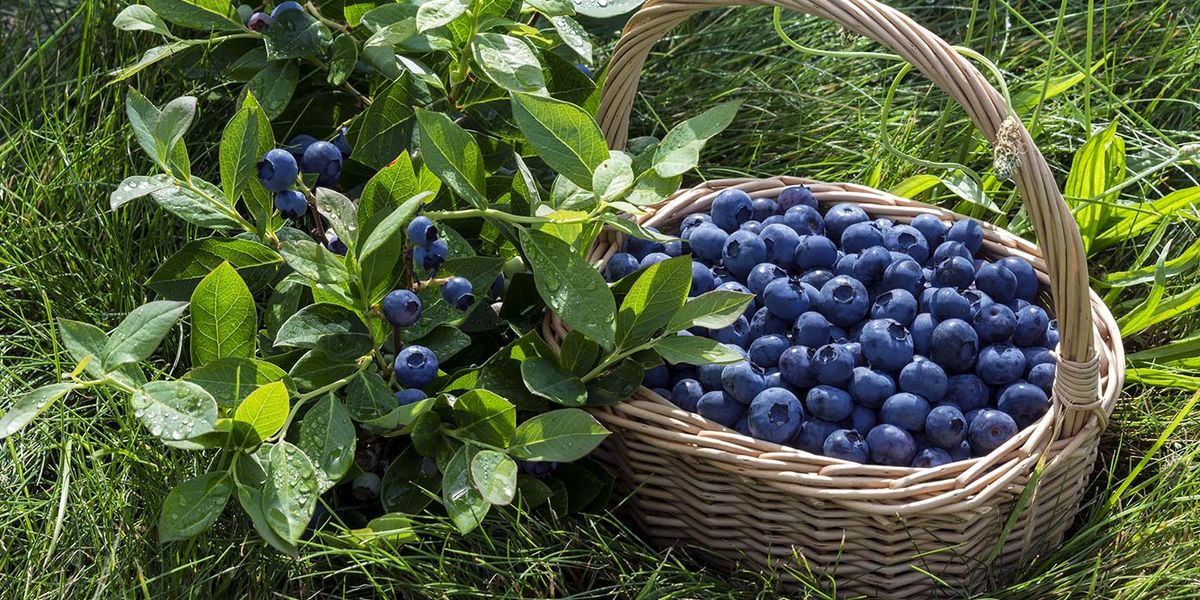
You have to admit that caring for blueberries is quite a hassle. But if you are patient and do not ignore our tips, this shrub will definitely give you a wonderful harvest of tasty, appetising and very healthy berries.

